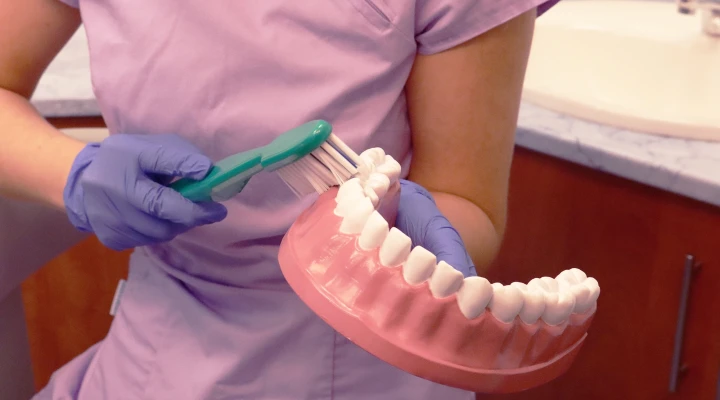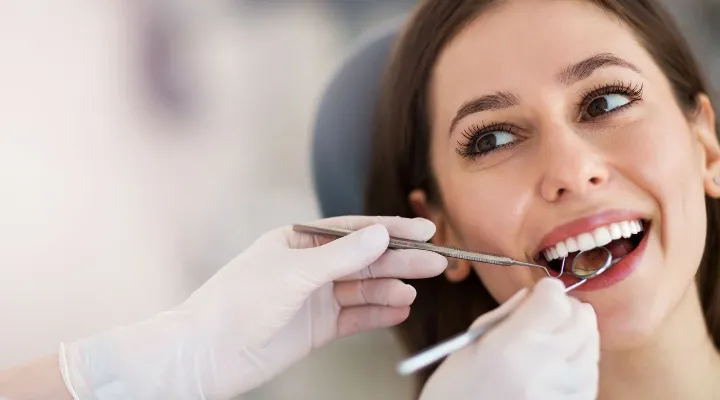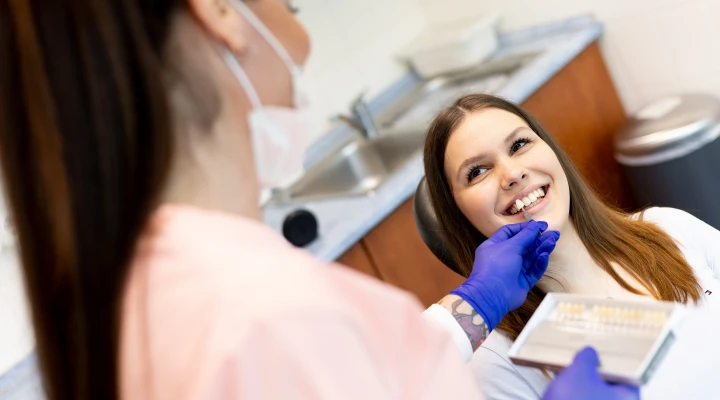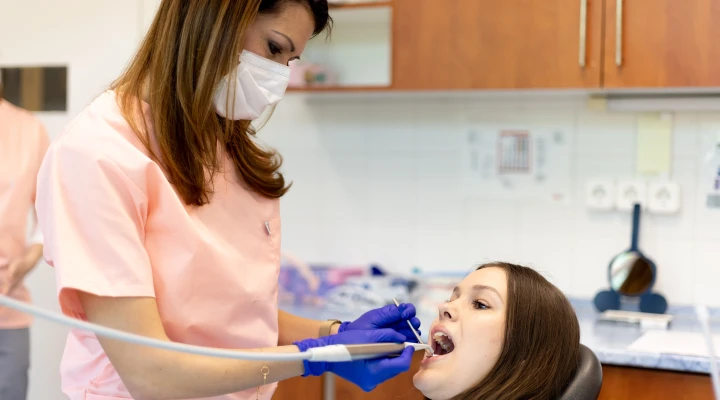When a patient comes to me, I always start by asking them if they have any issues at the moment. Though it's great that a lot of people come for a general check-up without displaying any symptoms, it is my job to thoroughly examine the mouth in order to form a comprehensive picture of its current condition. Healthy oral hygiene is not limited to just removing plaque. It is essential that the relationship between teeth and jaw is also in order (many people notice a clicking or chewing pain in the jaw joint), though it is also necessary to pay attention to the regular position of the teeth in order to prevent congestion.
I usually carry out the following procedures during a dental hygiene treatment:
- General assessment
- Instruction, motivation (plaque painting for children – part of their education)
- Plaque removal
- Dental cleaning, polish
During the examination, I use special tools to analyze the teeth one by one. I also assess the state of the tartar before and after it has been removed. As a dental hygienist, I do not set up a treatment plan or a diagnosis. Instead, I provide a guideline for establishing and maintaining a healthy oral care routine. I often refer my patients to one of our dentists – I can recommend the best specialists from RMC to investigate and solve the detected problem in-house.
After cleaning the teeth, I instruct the patient on the most effective use of available cleaning tools. We get an interdental cleaning brush and dental floss out and discuss the different types of toothbrushes and how to brush your teeth correctly.
Finally, I examine the mouth once more with the aim of finding any decay, or a filling that needs to be fixed or replaced.
Why do I recommend a panoramic X-ray?
For larger fillings, I usually recommend having an X-ray. In many cases, chronic inflammation develops imperceptibly and without pain, and an X-ray can tell us about the current condition of the teeth, bone mass and periodontium. An X-ray can also reveal whether a root-treated tooth has inflammation or whether there has been a change in the tooth root or around the nerve after a larger filling.
Cancer screening in the dentist's chair
I also tell our patients who smoke that, in addition to the dental hygienist, they should also visit the dentist regularly. A dentist not only works in the oral cavity, but also screens for cancer by examining the lymph nodes under the tongue, near the ears and in the neck.
- pediatrics21
- dietetics20
- RMC Dental Center15
- diet13
- internal medicine11
- dentistry9
- pediatric dentistry8
- sport7
- Dr Kinga Jókay7
- coronavirus6
- screening6
- covid6
- urology6
- obstetrics gynecology6
- prevention5
- cardiology5
- allergy5
- psychology5
- dental hygiene5
- infection4
- gastroenterology4
- menopause4
- screenings3
- Kinga Jókay M.D3
- Flu shot3
- Flu3
- women's screening3
- zsuzsanna kókai2
- Dr Nóra Gullai2
- infectious disase medicine2
- Ear-Nose-Throat2
- heat stroke2
- endocrinology2
- Dr Tímea Baló2
- allergen immunotherapy2
- Adrienne Nagy M.D.2
- Fetal Medicine Center2
- pediatric urology2
- flu season2
- meningitis2
- dermatology2
- gynecologist2
- Ophthalmologist2
- Headache Clinic2
- Dr Eszter Bodnár2
- headache2
- menopause program2
- invisalign2
- diabetology2
- cardiovascular disease1
- diabetes1
- hydration1
- hematology1
- iron1
- Imre Bodó M.D.1
- Same Day Surgery Center1
- nutritional disorder1
- lyme disease1
- gynecologic oncology surgery1
- first trimester screening1
Any questions before booking an appointment?
If you are unsure which doctor to see or what examination you require, we are here to help!
Simply request a free callback from one of our colleagues, who will help you find the right specialist based on your specific issue.








